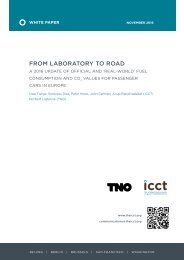Vol 55
Vol 55
Vol 55
- No tags were found...
Create successful ePaper yourself
Turn your PDF publications into a flip-book with our unique Google optimized e-Paper software.
so, WHAT HAVE YOU DONE FOR USLATELY?John ClarkChairman of Council18<strong>55</strong>-19<strong>55</strong>For the Society's Transactions in 19<strong>55</strong> the thenChairman of Council, Cdr G Bridgmore Brown,wrote an account of the first 100 years of theLondon and Middlesex Archaeological Society.It falls to me, his successor, to bring the story upto date.Bridgmore Brown's article is a workmanlikepiece, tracing the Society's origins in the establishmentof a provisional committee in July18<strong>55</strong> and the inaugural meeting in Crosby Hallon 14 December that same year where it wasunanimously agreed 'That a Society, to be calledthe London and Middlesex ArchaeologicalSociety, be now established'. Perhaps he couldhave made more of the Society's flamboyantearly activities: the excursions or 'countrymeetings' described by Eileen Bowlt elsewherein these pages, when a train was hired for thejourney, and the meeting ended with the servingof a 'collation' at a local hotel or suitable hall —or in the absence of such a convenience in ruralMiddlesex, on one occasion a large barn; or the'conversaziones' held in City livery companyhalls, with music (on one occasion provided bya string band from the Royal Artillery) as wellas suitable displays of 'various objects of artand antiquity'. Perhaps he should have drawnattention to the strictly limited social class fromwhich the first members of the Society came— that middle-class 'Victorian establishment'discussed by Sally Brooks in her analysis of theSociety's membership published in Transactions36 (1985). He commented that the Society'sannual subscription had been maintained at oneguinea (£1.05) ever since 1879 (it did not rise (totwo guineas) until 1958) without noting that this— a fall in real terms — might have encourageda much wider membership. And perhaps hemight have noted in passing the whiff of scandalthat surrounded the extraordinary dilatorinessof an early Honorary Secretary in paying intothe bank subscriptions he had received frommembers, which resulted in a loss to the Societyof 'as far as the Council could ascertain £59 2s3d' — no small sum in 1857.Bridgmore Brown recognised that the fortunesof the Society had fluctuated over the years, notingthe period in the early 1900s when membershipfigures had fallen to little more than 100. Hehimself had joined in 1912, and was one of onlytwo individual members whose membershipdated back to before the First World War. Herecalled 'the halcyon days of cheap railway travel'between the two World Wars when the Societyhad once again organised full-day visits to placesoutside the London area, and regretted thateven with the ending of the Second World War'the delay in restoring excursion facilities on therailways made it impossible to resume summervisits to distant objectives' — but since 1948 visitshad been made by coach. Membership figureshad risen, he was pleased to report (although itwas 1950 before they had again reached a figure,about 350, that approached the 395 reported in1857) — at the time he wrote, membership stoodat nearly 500.But changes in the Society and its activitiesreflected much broader changes that hadtaken place during the years 18<strong>55</strong> to 19<strong>55</strong>. Theestablishment of the Metropolitan Board ofWorks, in the same year that LAMAS itself wasfounded, was the first step towards London-wide



